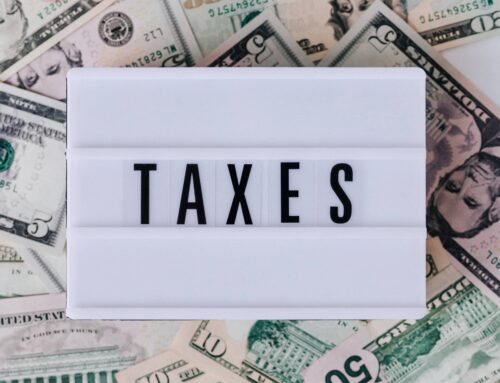Deferring Tax Payments in Canada: A Comprehensive Guide
In Canada, there are a few ways to defer tax payments, but it generally depends on your specific circumstances (such as your business structure or personal tax situation). Here’s a breakdown of how you might be able to defer your 2025 tax payments:
Thank you for reading this post, don't forget to subscribe!
1. Deferring Through RRSP Contributions
- What it is: Contributing to a Registered Retirement Savings Plan (RRSP) allows you to reduce your taxable income for the year, potentially deferring taxes to a later date (usually when you withdraw the funds in retirement).
- How it works:
- You can contribute to your RRSP until 60 days after the end of the year (typically March 1st for the previous year’s tax year).
- Contributions are deducted from your taxable income, lowering your taxes due for 2025 (and potentially pushing tax payments into the future).
- Tax Deferral Benefit: The more you contribute, the less tax you’ll owe in the short term. However, you’ll pay taxes when you withdraw the funds, typically in retirement, when your tax rate may be lower.
2. Using a Corporate Structure for Tax Deferral
- What it is: If you own a corporation, the business itself may be able to defer taxes on active business income.
- How it works:
- Small businesses (qualifying Canadian-controlled private corporations, or CCPCs) can benefit from the small business deduction, which taxes the first $500,000 of active income at a lower rate.
- You can retain profits within the corporation, deferring personal income taxes until you take a salary or dividend.
- Corporations also allow for corporate investment income, where tax on investment income (such as dividends or capital gains) may be deferred while reinvested in the business.
- Tax Deferral Benefit: By leaving profits in the company, you delay paying personal taxes on that income. You can take the income later, potentially at a lower tax rate or when you need it.
3. Deferring Tax Payments via Tax Instalments
- What it is: If you’re self-employed, or your income is not subject to regular withholding tax (e.g., dividends or interest income), you may be required to make quarterly tax instalments throughout the year.
- How it works:
- You can make arrangements with the Canada Revenue Agency (CRA) to adjust the timing or amount of your instalments, which can help you defer the full payment of your 2025 taxes.
- For example, if you expect a lower income or expenses in 2025, you might be able to request a reduction in your instalment payments. However, the CRA must approve any deferral requests.
- How to Request Deferrals: You can request adjustments via your CRA My Account or by contacting the CRA directly. Keep in mind that interest and penalties may apply if you defer payments without proper authorization.
4. Deferring Through Tax Credits or Deductions
- What it is: Taking advantage of various tax credits or deductions can effectively reduce your taxable income and therefore reduce the taxes you owe.
- How it works:
- Some tax credits (such as the Basic Personal Amount, Canada Child Benefit, and others) reduce your taxable income directly.
- Deductions like business expenses, capital cost allowance (CCA) for depreciable property, and investment deductions can help defer tax payments.
- Example: If you own a business, you might be able to depreciate your assets over time (using CCA), which reduces your income and therefore defers taxes on the depreciation portion.
5. Use of a Tax Deferral Strategy (Income Splitting)
- What it is: In some cases, you might be able to split income among family members (spouse, children, etc.) to reduce the overall family tax liability. This can be particularly useful for higher-income earners.
- How it works:
- This is typically done through a family trust, dividends, or by paying a salary to family members involved in the business.
- Income splitting may reduce the family’s overall tax burden by moving some of the income into lower tax brackets.
- However, the CRA closely monitors income splitting, so it should be done within the bounds of the law.
- Tax Deferral Benefit: Lower-income family members may pay less tax on their share of the income, potentially deferring taxes until they are in a higher tax bracket in future years.
6. Deferring Capital Gains
- What it is: If you’re planning to sell a business or asset in 2025, you may be able to defer some taxes by using certain exemptions and strategies.
- How it works:
- Lifetime Capital Gains Exemption (LCGE): If you’re selling shares of a qualifying small business, you may be able to exclude up to $913,000 (2024) of capital gains from taxes. This amount is indexed for inflation, and this exemption applies to the sale of shares, not assets.
- Tax-deferred rollover: Under certain conditions, you can defer taxes on the sale of business assets to a later date, often when the proceeds are reinvested into another eligible business or property.
7. Requesting a Payment Deferral from the CRA
- What it is: If you face financial hardship and can’t pay your 2025 taxes on time, you can request a deferral or payment arrangement from the CRA.
- How it works:
- The CRA may grant an extension of time to pay or set up a payment plan if you can demonstrate you are unable to pay the full amount by the due date.
- This request needs to be made before the due date of your taxes.
- How to Request: You can contact the CRA to arrange a deferral or installment payment plan. Be aware that interest may still accrue during the deferral period.
8. Tax-Free Savings Account (TFSA) Contributions
- What it is: A Tax-Free Savings Account (TFSA) allows you to save and invest money without paying taxes on the growth or withdrawals.
- How it works:
- Contributions to a TFSA are not tax-deductible, but earnings and withdrawals are tax-free.
- By using the TFSA, you can effectively defer paying tax on any interest, dividends, or capital gains earned within the account, which can help manage cash flow and reduce taxable income in the future.
Important Notes
- Interest and Penalties: If you don’t pay your taxes by the due date, the CRA charges interest on the amount owing. Even if you get an extension for paying, interest may still apply.
- Tax Deferral Options Are Not Unlimited: While there are strategies for deferring taxes, these should be used within the limits of tax laws and CRA rules. Always consult a tax professional to understand your options fully.
Next Steps
- Consult with a tax professional or accountant to understand the best strategies for deferring taxes based on your specific situation.
- If you’re self-employed or a business owner, speak with your accountant about deferring tax payments through corporate structures or RRSP contributions.




